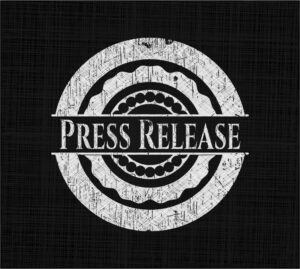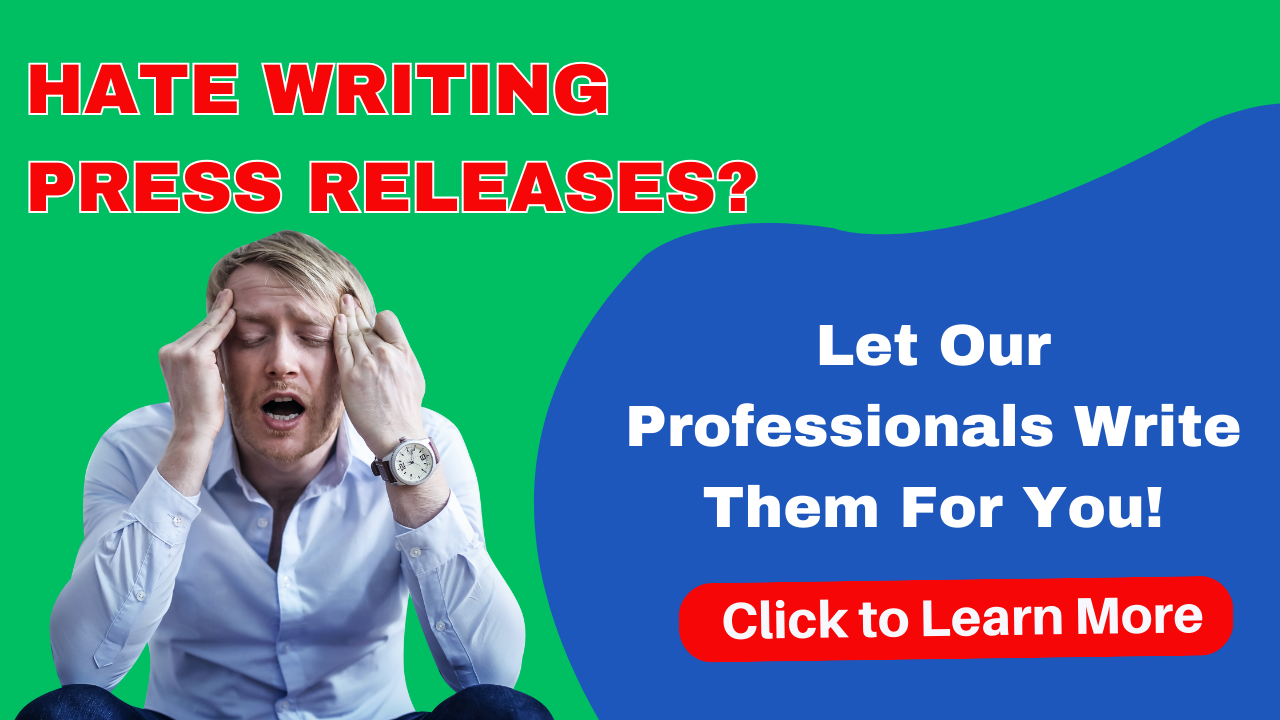How to Format a Press Release Properly
 A journalist may have 50-100 press releases come across their desk every day. If you want your story to be covered, it’s important to have your press release formatted correctly, so it’s easy for journalists to read.
A journalist may have 50-100 press releases come across their desk every day. If you want your story to be covered, it’s important to have your press release formatted correctly, so it’s easy for journalists to read.
But, writing a press release can be a little confusing if you’ve never done it before. This is because the proper press release format includes certain elements that are not included in other types of writing. Plus, the entire piece is structured differently than the way you were taught to write papers in school.
Today we’re taking a look at the proper press release format so you can share your big news with the world.
The Goal of a Press Release
The goal of a press release is to give an official statement or announcement of something that is newsworthy. In addition, it gives journalists the information they need to build a strong story.
A press release can also be published on websites, which can help boost SEO and drive more traffic.
Formatting Your Press Release – A Step-by-step Guide
A press release is a little more complicated than other written pieces. Because they were traditionally written to make it easy for journalists to scan information, there are a few special elements that you should include when formatting a press release.
Want a sample press release to use as an example?
-
Write a Byline (Unless you are Using A Press Release Distribution Service)
The byline goes at the top left corner. It includes your name, title, and contact information. Your contact information is typically a phone number, email address, and mailing address.
If you are writing on behalf of a large company, you might want to put a department name instead of your name.
If you decide to follow best practices and use a press release distribution service to substantially increase the reach and impact of your press release, you don’t need to worry about the byline, because that will be automatically be added by the press release distribution service.
-
Indicate the Release Date
At the top right corner above the byline, you should add the phrase “FOR IMMEDIATE RELEASE” in capital letters if your press release is ready for immediate distribution.
If you want to send your press release out ahead of the time you want it to be covered, it’s called an embargoed release. In this case, add “EMBARGOED FOR RELEASE” along with the date and time that you want the story to go live.
-
Start With a Compelling Headline and Subhead
Your headline should grab the readers’ attention and clearly convey the news value of your announcement. It should be concise, typically under 80 characters, and give journalists a good reason to read on. Think of it as the title of your story; it should be intriguing but also informative.
If you’re sharing your press release online, it’s helpful to include keywords in the headline. This can help it show up in more search engine results.
-
Add a Subheadline (Optional)
The subhead is optional and should be placed directly below the headline. It can add additional context or detail to your headline. This is your chance to flesh out the headline a bit more without diving into the body of the press release, allowing your reader understand a little more about what the press release is about and encourages further reading.
Both the headline and subhead should be in title case. This means that all nouns, pronouns, verbs, and adverbs should be capitalized.
-
Include a Properly-Formatted Dateline
The dateline shows the location where the press release is coming from. It’s usually a city. In addition, it should include the date it’s published. The place stamp and date should be separated from the rest of the lead paragraph with a dash.
Follow this format: CITY, ST. (Month, Day, Year) –.
The AP Stylebook, the manual that dictates proper format of press releases, has very specific requirements for which datelines should include statenames, etc. I recommend checking these dateline instructions before writing your press release.
-
Craft a Strong Opening/Lead Paragraph
The opening paragraph, known as the lead paragraph in journalism, gives a quick overview of the story to help journalists decide if it’s a good fit for their audience. The lead paragraph should answer who, what, when, where, why, and how.
Keep to the basic facts in your lead paragraph and avoid selling products and services. You should however mention what makes the story newsworthy.
-
Provide Supporting Information in the Body of Your Press Release
The body of a press release expands on and completes the story. It provides additional details that make it easier for journalists to cover the story. In addition, it should explain why the story is newsworthy.
When writing the body of a press release, use the inverted pyramid approach. This means the most important pieces go at the beginning of the press release. Then, you can move on to additional information.
In later paragraphs, it can be helpful to include quotes from stakeholders. You can also use bullet points for relevant information in order to make it easier to read.
Since press releases are often shared digitally, it opens the door to adding other elements. You can add hyperlinks or embedded visual content. It’s also common to include multimedia attachments to digital press releases.
Overall, you should use short paragraphs in the body of your press release. This means trying to stick with two to four sentences in each paragraph. About three to four paragraphs should be all you need.
-
Include Boilerplate Information
The boilerplate goes after the body of your press release. It should describe your company or organization, what it does, and how it helps customers.
This section is usually about a paragraph or two long. It provides useful background information to reporters when they are writing stories.
Here’s a specific article on how to craft an effective boilerplate for your press releases.
-
Add Contact Information
Conclude your press release with the contact information of the person or team handling media inquiries. This should include a name, phone number, and email address at a minimum. Making it easy for journalists to reach out for more information is essential.
Other Elements
After the boilerplate, you may want to add a final note or call to action. This is a great place to encourage someone to reach out to you if they want more information. For example, you could write “For more information, please email [name] at [email address].”
An interesting quote can be a helpful addition to a press release. This gives an item that can be directly shared by journalists. In addition, it can be a great way to share a snippet about why the news is relevant to the public.
Choose one or two key figures to quote. This should then be added to the body of the press release.
It’s traditional to add “###” at the end of the press release. Traditionally, this was to signify that there was no more news as busy journalists often had to quickly read press releases. It is still highly respected to do this today.
If your press release flows on to two pages, you should end the first page with “-more-”. Both “###” and “-more” should be centered.
Other Formatting Tips
In addition to the elements you need to add, press release format also calls for a few other details to pay attention to.
- Length of your press release: The total length of your press release should only be about 300 to 500 words.
- Follow AP style guidelines: If you ever have a doubt about how to format your text, always be sure to follow AP style guidelines. This will allow media outlets to use it without having to change anything.
- Formatting printed press releases: Your document should use one-inch margins around the entire document. Make sure to use single space and an easy-to-read business font, such as Arial or Times New Roman.
- Use third person: Write in a professional and objective tone, avoiding first-person pronouns unless in a direct quote.
- Include multimedia links: If you have photos, videos, or other multimedia elements that can accompany your release, include links to them. This can make your story more appealing.
- Proofread: Ensure your press release is free from spelling and grammatical errors. Mistakes can detract from your credibility.
More Press Release Formatting Resources
We want to make writing press releases easier for you, so we’ve put together a range of resources, including:
- How to Write a Press Release: An Advanced Guide
- Free Press Release Template & Format (Including Sample Press Releases)
- Industry and Type of Press Release Specific Templates and Sample Releases
Follow This Guide for Proper Press Release Format
Writing a press release can be a little confusing the first few times. After all, there is a special press release format to follow and special elements to include. But once you understand the format, you’ll be able to write and send a press release without trouble.
Remember, the key to a successful press release lies in its ability to communicate your message clearly, concisely, and compellingly.
When you’re ready to release your press release for distribution, place your order with eReleases.
